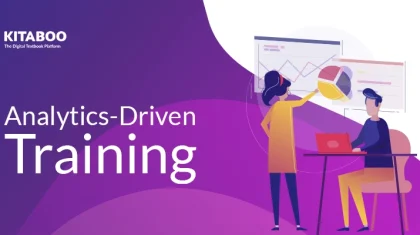
Publish Your eBook: Your Guide to Digital Success!
Summarize this blog with your favorite AI:
Are you passionate about creating compelling digital content but don’t know how to publish eBooks and send them to readers? Digital publishing is your solution!
Digital publishing offers you a plethora of options to create stunning and engaging digital books. They’re loaded with in-built features that make your online book creation journey easy and fun. Leverage modern tools and transform your static textual content into captivating bestsellers.
Right from topic selection to eBook distribution, every stage of your publishing journey will be automated and streamlined. Embrace innovation by publishing the most interactive eBook for modern readers.
Table of Contents
- Revise Your Manuscript for Improved Readability
- Choose the Right eBook Format for Enhanced Reading
- Design an Attractive eBook Cover
- Select a Trusted eBook Platform
- Copyright and Legal Considerations for Extra Security
- Pricing Strategy to Meet Your Financial Goals
- Metadata and Keywords for Higher Discoverability
- Consider eBook DRM for Content Security
- Publishing and Distribution of eBooks
- Monitor Sales and Analytics with Modern Tools
II. Conclusion
10 Steps to Publish eBooks
Advanced technology and the emergence of modern publishing platforms have revolutionized the process of sharing and consuming content. It has enabled authors and publishers to share knowledge, creativity, and stories with global readers.
With such high-end publishing tools, you can effortlessly create your eBook and control the publishing process in a larger way than before.
To help you publish eBooks smoothly, we’ve listed a few key things that should be taken care of while publishing:
1. Revise Your Manuscript for Improved Readability
Creating a flawless manuscript is the step towards publishing your dream eBook. Take time to proofread and edit your content. Ensure there are no grammatical mistakes, spelling errors, or plagiarism in the manuscript. Grammatical errors or spelling mistakes in an eBook can put off readers and lower the readability scale of your digital book.
However, if you’re not confident about editing your manuscript manually, you can leverage online editing tools. There are several editing tools available online that can help in editing your content and also check for plagiarism. By using clear and concise language in your eBook, you can attract more reader engagement and boost popularity.
2. Choose the Right eBook Format for Enhanced Reading
Selecting the right format to publish eBooks is vital. Modern readers use several devices for online reading, like smartphones, tablets, e-readers, laptops, and more. A multi-compatible eBook format will enable readers to read their favorite eBooks on their preferred devices and platforms.
For example, eBook formats like ePub can support digital reading on various devices and platforms. But, if you choose AZW, it is compatible with Amazon Kindle.
Regardless of whichever format you choose, it should follow the formatting needs of the specific platform(s) and be readable on different devices. Also, apply relevant fonts, page breaks, and line spacing, and maintain a consistent and professional format. It’ll help in creating an overall high-quality eBook with enhanced visual appeal.
3. Design an Attractive eBook Cover
Apart from compelling content, online books should have stunning eBook covers. Your eBook cover is the first thing that readers will notice, and then they’ll flip the pages to read the content. It’s the first step towards attracting an audience.
Many readers prefer analyzing the book cover first, which includes its color, design, heading, tagline, and so on. If it doesn’t resonate with them, they will simply switch over to some other eBook offering a better visual appeal. Hence, choose the right color, background, images, fonts, and similar visual enhancers to design an eye-catching eBook cover.
Also, the digital publishing platforms are built with several advanced tools that will help you create a captivating digital book cover. Use them to enhance your book cover, giving it a professional touch.
4. Select a Trusted eBook Platform
Once done with the editing, designing, and formatting of the content, it’s time to publish eBooks. To connect with the right reader base, it is essential to choose an ideal publishing platform.
Every platform has its own set of perks and provisions. For example, publishing platforms like Amazon KDP, Apple Books Store, and Google Books have different distribution systems and royalty structures.
A few platforms would offer higher royalties against a specific price range or distribution channel. As a publisher, you should compare the rates and check if it meets your financial goals.
For better clarity, you can consider the reviews and testimonials of other publishers/authors. It’ll help to validate the quality of user interface, customer service, and overall dependability of the platforms. Thus, you can choose one that aligns with your needs and goals.
5. Copyright and Legal Considerations for Extra Security
Before publishing the digital content, publishers should own the eBook rights or hold valid permissions from copyright holders. It safeguards your online content from unauthorized use and infringements. Also, you can claim ownership rights over your content and secure the financial goals.
To protect your digital content, register it with the copyright registration office in your country. You might have to submit a copy of your digital content and a nominal fee to accomplish the copyright registration task.
6. Pricing Strategy to Meet Your Financial Goals
Strategize your eBook pricing before you proceed with the publishing task. You can start by conducting market research to survey the prices of other eBooks of the same genre.
It will enable you to decide on the appropriate price of the eBook and not fix any random cost. Evaluate factors like delivery costs, genre, target audience, number of pages, and market competition.
7. Metadata and Keywords for Higher Discoverability
To make your eBook discoverable on online platforms, optimize its metadata using appropriate tags, categories, and descriptions.
Craft captivating titles and subtitles that accurately reflect the context of the content. Highlight the key components and emotions of the digital book by using crisp and engaging descriptions.
Assigning the right genres and categories to the eBook will help readers to find it readily. Insert relevant keywords for improved search results. Include them in the metadata and description for enhanced discoverability and to attract the target audience.
8. Consider eBook DRM for Content Security
DRM, or Digital Rights Management, is an advanced tool that helps to safeguard your digital content from unauthorized copying and distribution. By selecting an adequate DRM platform you can limit the access of your eBook and protect it from online content piracy.
Using the latest technology, DRM controls the copyright of your digital content. In other words, you can control the copying and printing of your eBook and shield it with an additional protective cover.
Implementing DRM on your eBook enables you to monitor your online content closely. It’ll show the number of viewers, whether they’ve revealed their authorization to anyone else, and identify them.
Guide:
Know How to Create an Interactive eBook
9. Publishing and Distribution of eBooks
Plan a specific date to launch or publish eBooks. Strategize the entire launching process to avoid any loopholes.
Include different promotional activities like social media marketing, email campaigns, reaching out to book bloggers, and others to generate anticipation and sales. Arrange for a compelling and memorable eBook launch through audience engagement and sharing teasers of the book.
For distribution, decide whether you want to share it on multiple platforms or stick to one particular platform. Exclusive distribution can have its perks, like more visibility and promotional opportunities. While choosing a multiplatform distribution can extend your reach to a broader audience.
10. Monitor Sales and Analytics with Modern Tools
Regularly track your eBook sales and analytics data to discover trends and patterns.
This information can be valuable in modifying your marketing approaches and upgrading your digital content to meet readers’ expectations. Modern digital publishing platforms are incorporated with analytical tools that help in tracking eBook performance.
Also, such tools help to gather readers’ feedback on the eBook and enable you to connect with them regularly on the dashboard. This strategy helps to establish a healthy relationship with the audience and boosts the popularity of the online book.
KITABOO, the digital textbook platform, provides metrics and analytics related to the eBook’s performance. Readers can provide analytical data to authors/ publishers based on the content of the digital book.
Conclusion
To publish eBooks on digital platforms can be an exciting and rewarding task. To gain the maximum benefits, you must follow a streamlined publishing regime. Includes powerful editing, formatting, designing a stunning eBook cover, knowing different publishing platforms, and more.
Also, consider the legal aspects of owning the digital rights of the eBook. It prevents copyright infringements. Besides, by providing high-quality content at affordable prices, you can escalate the sale of your eBooks.
Digital textbook platforms like KITABOO have made eBook creation tasks simpler. Authors and publishers can utilize this cloud-based platform to upgrade their eBook creation, publishing, and distribution process. With cutting-edge technology and various plug-ins, it streamlines your content creation process.
To know more about KITABOO’s digital textbook platform, contact us today!
Discover how a mobile-first training platform can help your organization.
KITABOO is a cloud-based platform to create, deliver & track mobile-first interactive training content.



